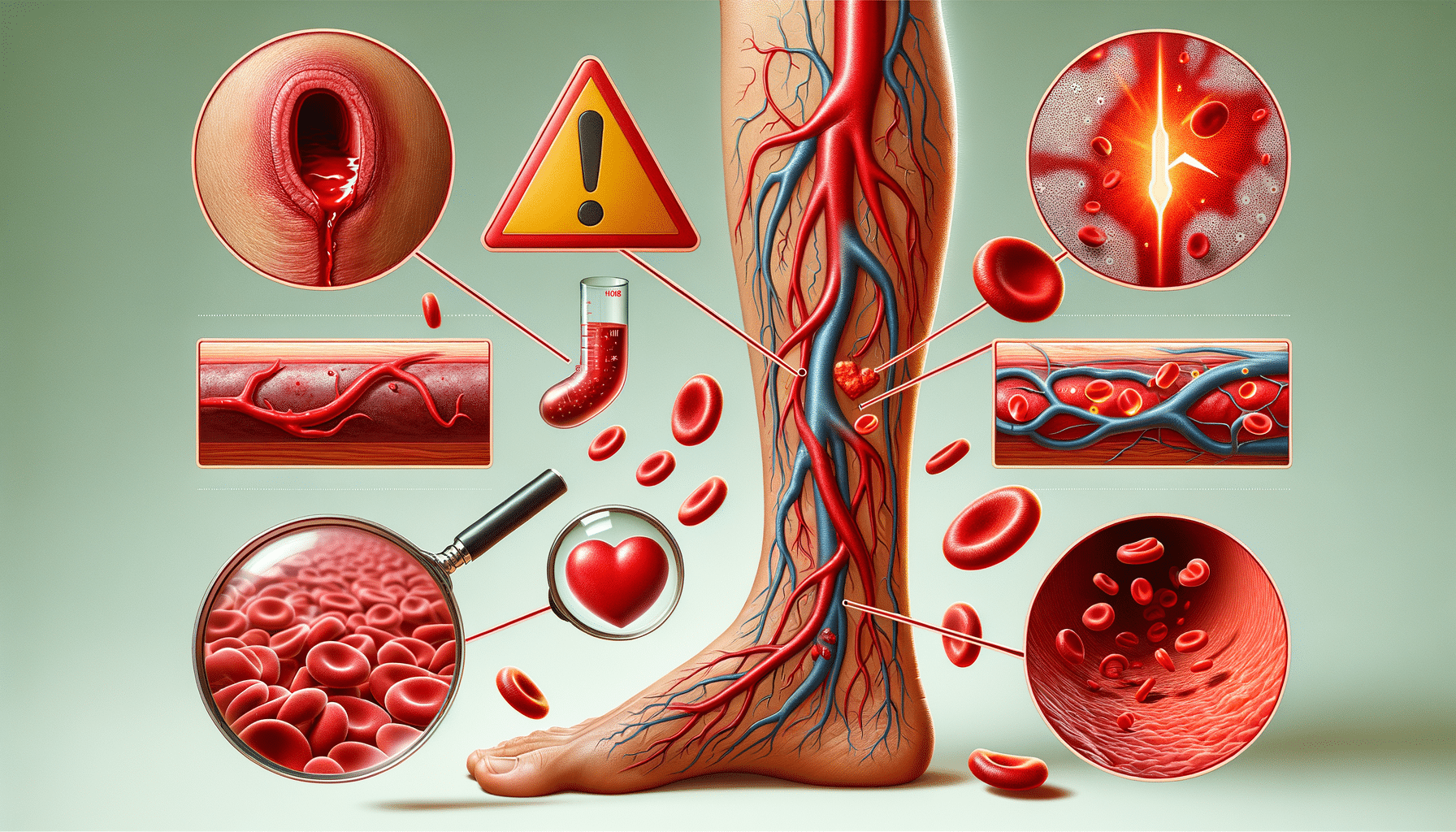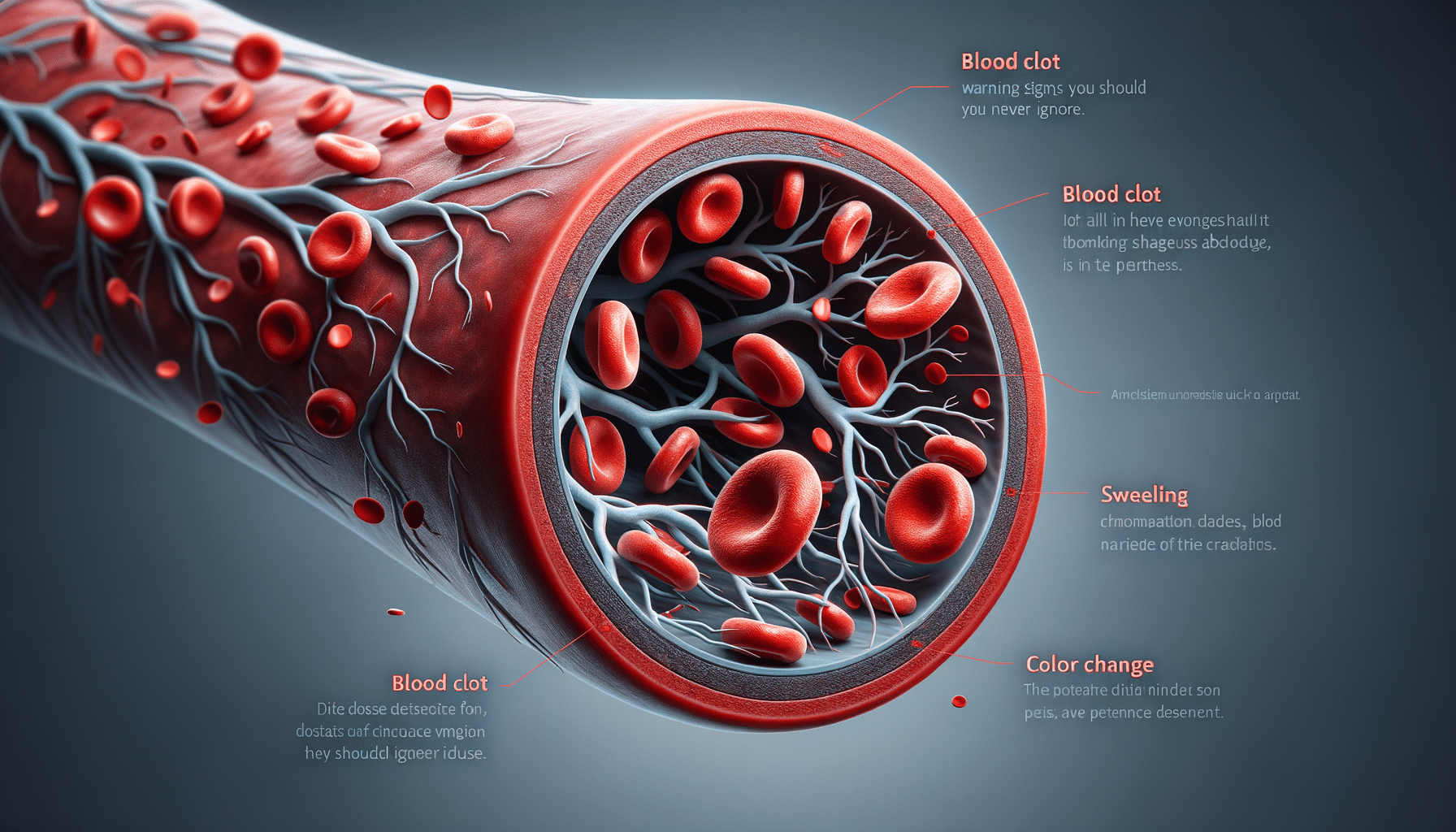
Detecting Early Blood Clot Signs: A Comprehensive Guide
Introduction to Blood Clots
Blood clots are a natural response of the body to prevent excessive bleeding when an injury occurs. However, when these clots form inappropriately within blood vessels, they can pose serious health risks. Detecting early blood clot signs is crucial for timely intervention and effective treatment. This article delves into the importance of recognizing these signs and provides a comprehensive guide to understanding the implications of blood clots.
Understanding the Causes of Blood Clots
Blood clots can develop due to various reasons, and understanding these causes is essential in recognizing early signs. Common causes include prolonged immobility, certain medical conditions, and lifestyle factors. For instance, individuals who sit for extended periods, such as during long flights or sedentary jobs, are at increased risk. Medical conditions like atrial fibrillation, obesity, and certain genetic disorders can also contribute to clot formation. Additionally, lifestyle factors such as smoking and a diet high in fat can elevate the risk.
Recognizing these causes can help individuals take preventive measures. For example, staying active, maintaining a healthy diet, and avoiding smoking are effective strategies to reduce the risk of clot formation. Awareness of personal risk factors is the first step in detecting early blood clot signs.
Identifying Early Symptoms
Early detection of blood clots is vital to prevent severe complications such as stroke or pulmonary embolism. Symptoms vary depending on the clot’s location but often include swelling, pain, and redness in the affected area. In the case of deep vein thrombosis (DVT), symptoms typically appear in the legs, manifesting as swelling and tenderness. Pulmonary embolism, a serious condition where a clot travels to the lungs, may present with sudden shortness of breath, chest pain, and a rapid heartbeat.
It’s important to note that some individuals may experience subtle or no symptoms at all. Therefore, regular health check-ups and being vigilant about any unusual changes in the body are crucial. Early recognition and prompt medical attention can significantly improve outcomes.
Diagnostic Methods and Treatment Options
Once early blood clot signs are suspected, medical professionals employ various diagnostic methods to confirm their presence. Ultrasound imaging is commonly used to detect DVT, while CT scans and MRI can identify clots in other areas of the body. Blood tests measuring D-dimer levels may also aid in diagnosis.
Treatment options depend on the clot’s severity and location. Anticoagulant medications, often referred to as blood thinners, are the primary treatment to prevent further clotting. In more severe cases, thrombolytic therapy may be administered to dissolve clots quickly. Surgical intervention might be necessary if the clot poses an immediate threat.
It’s essential for patients to adhere to prescribed treatments and follow-up care to prevent recurrence. Lifestyle modifications, such as regular exercise and dietary changes, play a significant role in managing and reducing the risk of future clots.
Preventive Measures and Lifestyle Adjustments
Prevention is always better than cure, and taking proactive measures can significantly reduce the risk of blood clots. Individuals at higher risk should focus on maintaining an active lifestyle, incorporating regular exercise to improve circulation. Hydration is also key, as it helps keep blood viscosity at optimal levels.
Dietary adjustments can further support prevention efforts. A balanced diet rich in fruits, vegetables, and whole grains, while low in saturated fats and sugars, is recommended. Avoiding tobacco and limiting alcohol consumption are additional steps that can lower risk.
For those with a family history of blood clots or existing health conditions, regular medical check-ups and discussions with healthcare providers about risk factors and preventive strategies are advisable. By staying informed and making conscious lifestyle choices, individuals can effectively manage their risk and detect early blood clot signs.


